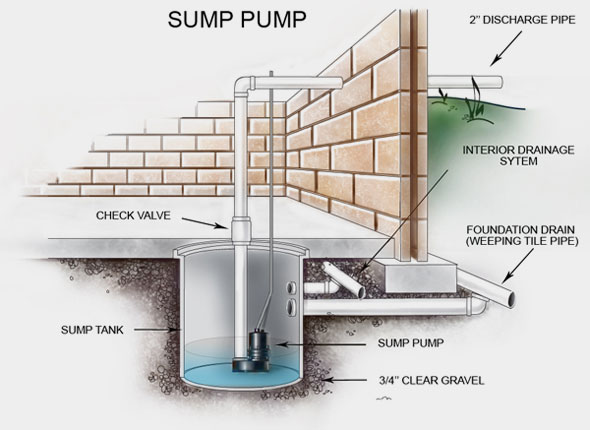Keeping Your Basement Dry with a Sump Pump
Is the basement dry? That’s a question Raleigh area homeowners have been asking, especially after October’s historic soaking. When rain builds up faster than the ground can absorb it, water can flood into your house, starting at the lowest level, which is the basement. If your basement gets damp or floods after a hard rain or after the melting of a heavy snowfall, or has become moldy, the wetness can affect anything stored down there and can make the area unlivable. That’s why many homeowners use a sump pump to help keep their basement dry.
What is a Sump Pump?
A sump pump is a device that sits in the basement and pumps excess water into a sump basin and sends it outside of your home. Most homeowners use one of two types of pumps: pedestal or submersible. The pedestal pump is more economical and is positioned above ground, making any repair easier. A submersible pump is installed below ground, is quieter and less obtrusive.
The size of the sump pit may also determine the type of pump needed. A pedestal pump requires a smaller area than a submersible pump, and can be used in sump pits that are narrow or shallow.
Installing a Sump Pump
If you’re comfortable with home repairs, you can install a sump pump on your own. The website, This Old House, offers the following steps:
- Set the sump basin upside down on basement floor; mark its outline on floor.
- Use a demolition hammer to chop through concrete floor.
- Dig a hole deep enough to set basin flush with floor.
- Wrap the sump basin with filter fabric.
- Set the basin in the hole.
- Add several inches of gravel to basin.
- Lay the stone paver on top of the gravel.
- Set the pump on top of the paver.
- Connect the check valve and PVC pipe to pump; run pipe up a nearby wall.
- Drill a hole through house wall with hole saw.
- Continue the PVC pipe through wall and extend to the outdoors.
- Mix the concrete in trough using a hoe.
- Fill in around the basin top with concrete; smooth the concrete with a pointed trowel.
- Plug in the pump, and then test it by filling the basin with water.
Sump pumps typically require little maintenance, with the exception of a periodic check of the components to ensure they are functioning properly. However, since sump pumps are run by electricity, when the power is out (i.e. during a storm, flood or blizzard) the pump will not operate. You may look for a sump pump with a battery-operated backup.
Have questions about keeping your basement dry? Give our qualified plumbers at NC Plumbing Services a call at 919-868-3585. We provide complete plumbing services in Raleigh, Durham, Chapel Hill, Wake Forest, Cary, Garner, Clayton, Apex, Fuquay-Varina, Holly Springs and beyond including the counties of Wake, Harnett, and Johnston.

